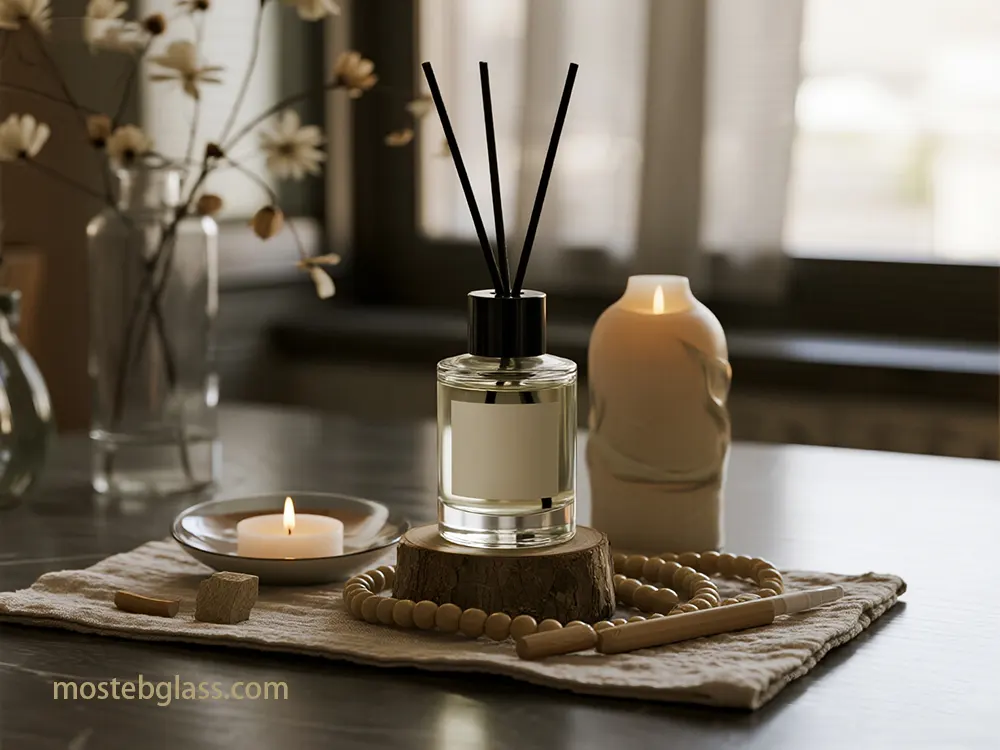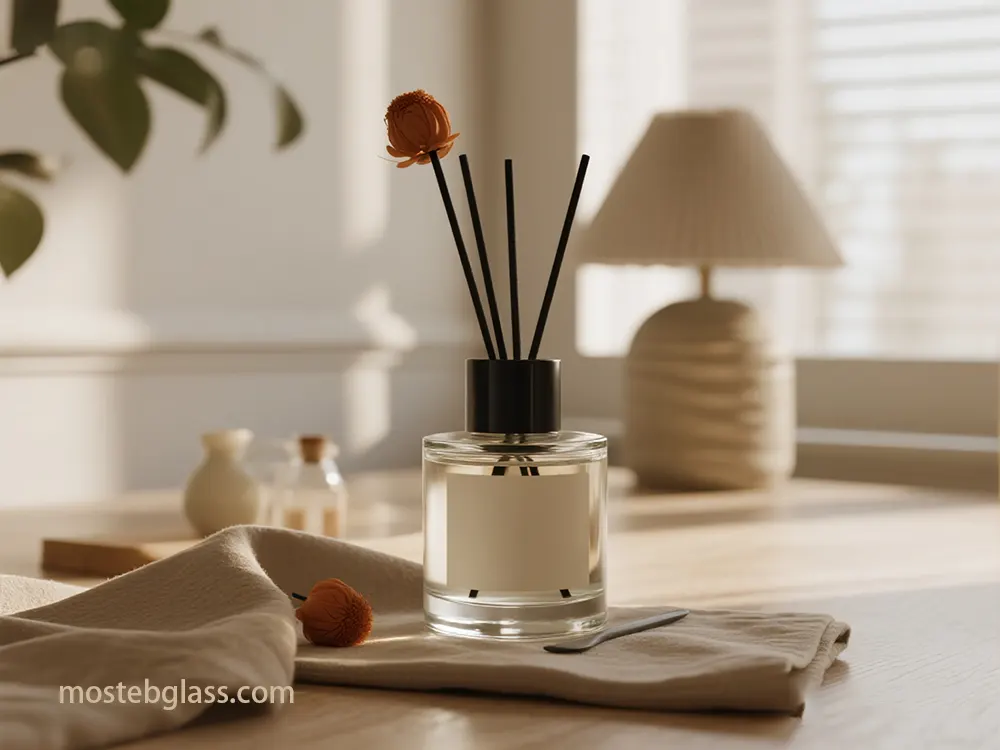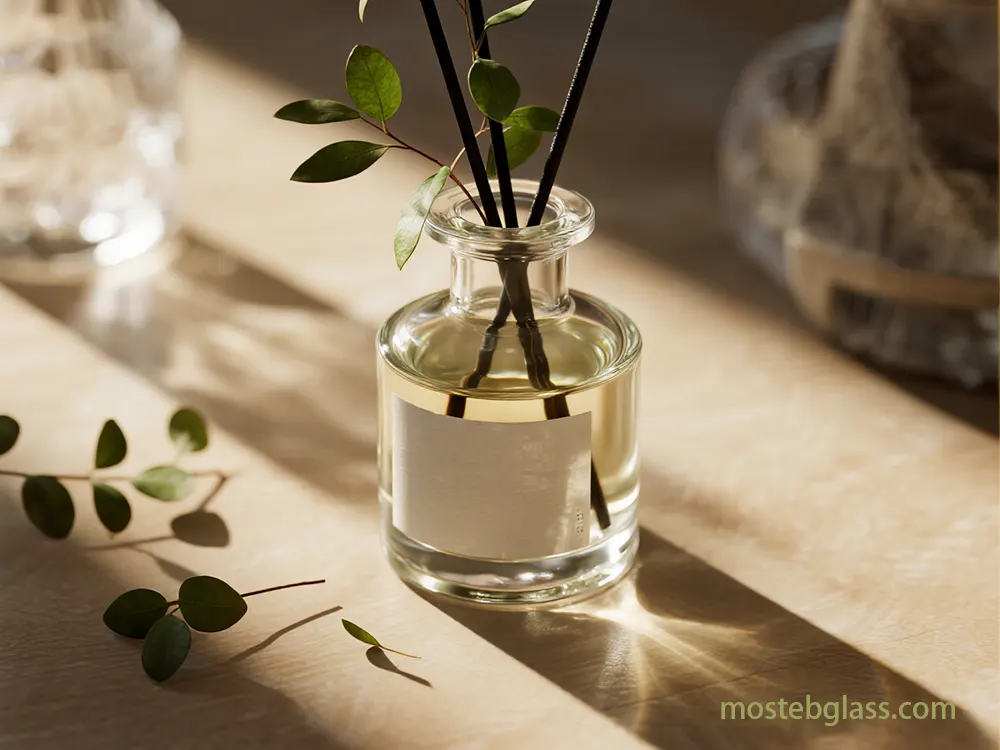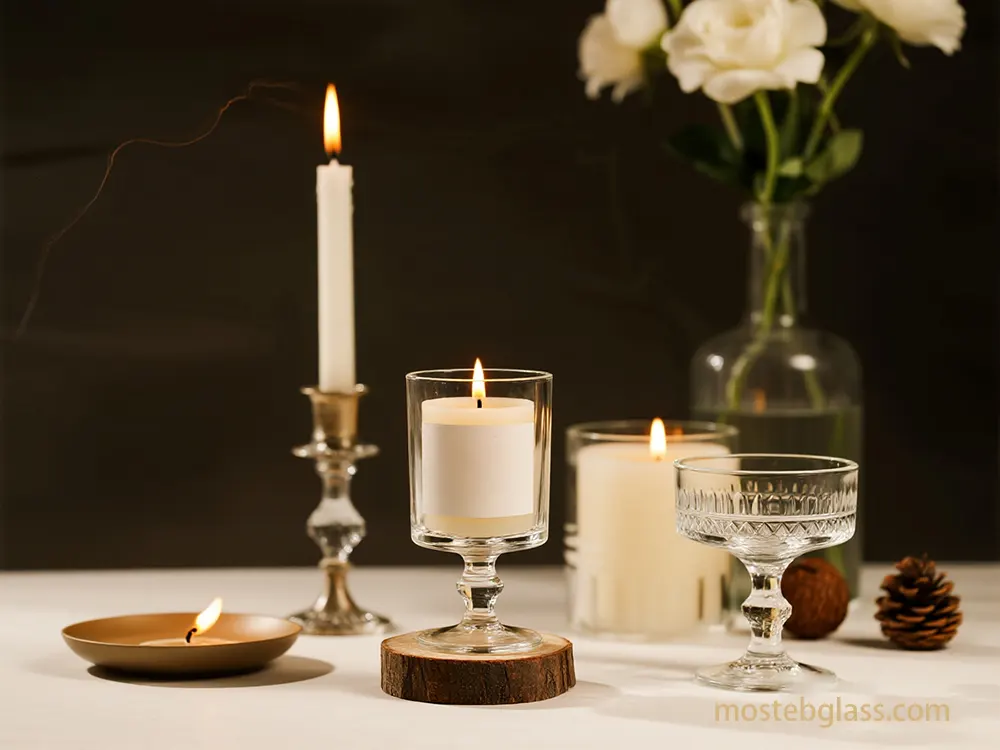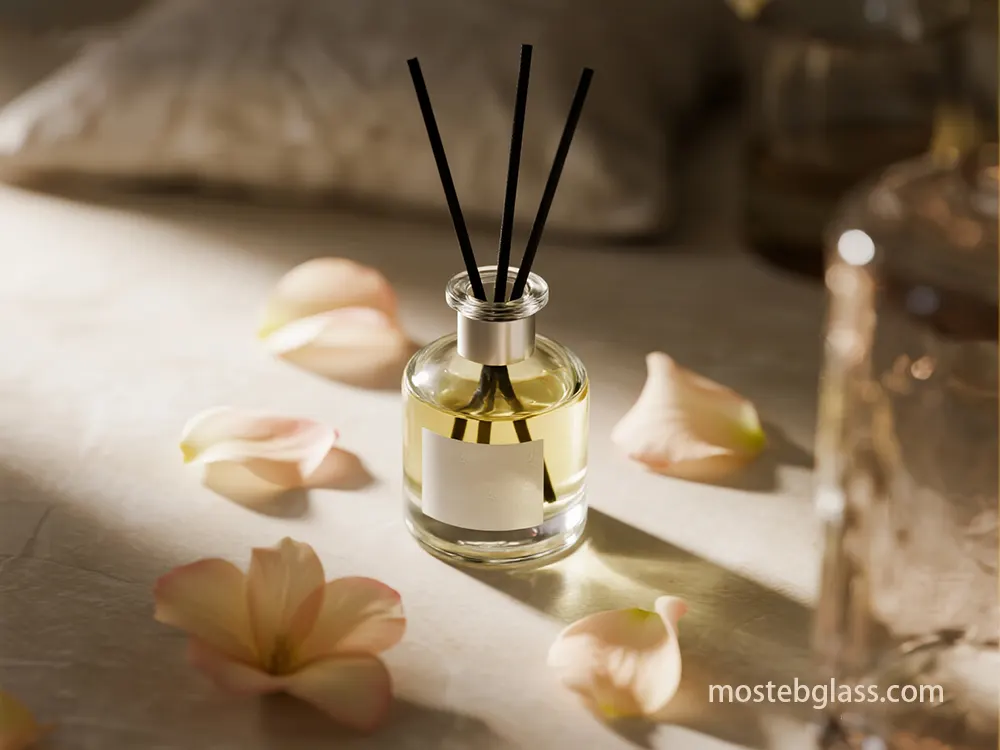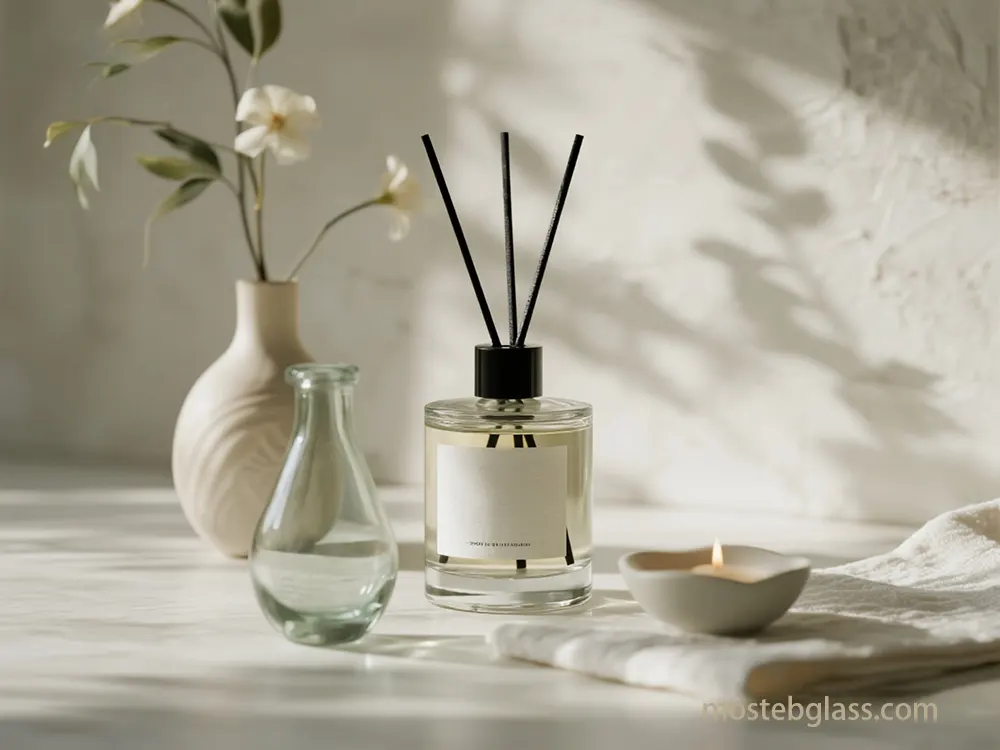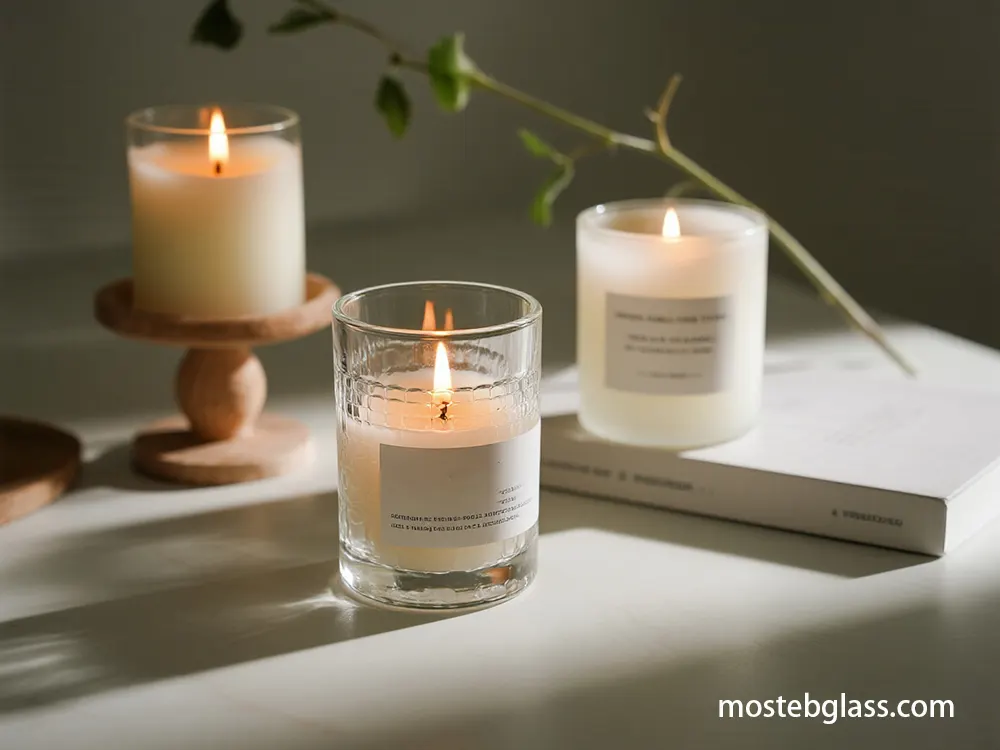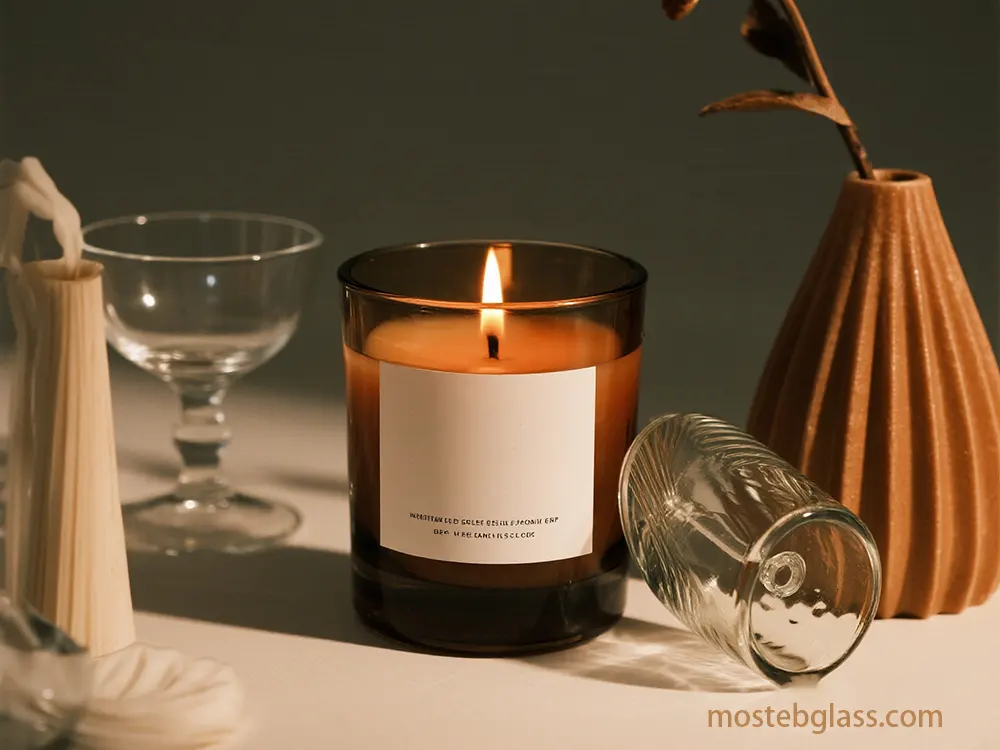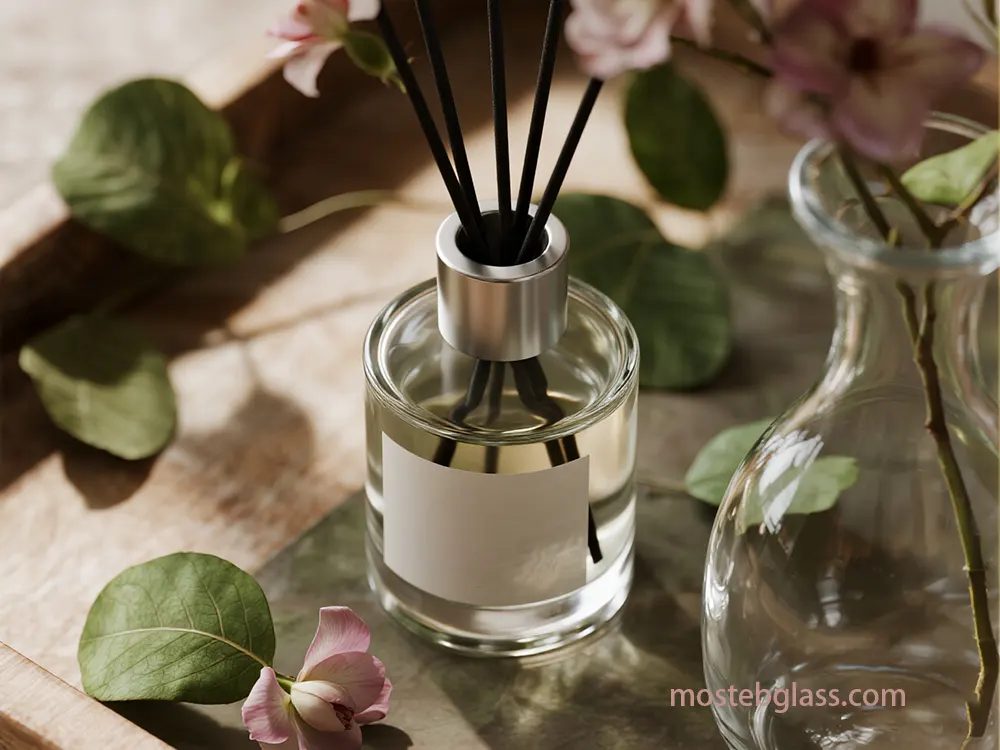Under the EU PPWR, all packaging must be recyclable by 2030 and a target of 90% collection rate of container glass has been set. North America—California in particular—has grant programs to promote the use of cullet, and the Asia-Pacific market (Vietnam, for example) is creating EPR schemes.
Many brands use decorative glass to effectively tell their stories:
Post-consumer bottle glass (which is formulated to set quickly) may require additional fluxing agents in a hand-blown process, thus consider carefully in artisanal settings.
2.2. Energy-Efficient Blowing and Finishing Processes
It is vital to minimize and decrease the energy footprint and consumption of glass manufacturing. Approximately 20% of global industrial use is combined by glass manufacturing.
Furnace Technologies:
Electric furnaces are 35% more energy efficient than gas-fired furnaces and have lower emissions. Hybrid furnaces have both an electric and natural gas sources, reducing energy consumption by 5-10%, and CO2 by 20-45%. Regenerative furnaces recover the heat of the exhaust stream, achieving energy efficiency of 50-65%. Oxy-fuel combustion uses pure oxygen in place of combustion air, resulting in a better energy efficiency range of 20-45% while lowering NOx emissions by 70-90%.
Heat Recovery Systems:
- Recuperative and regenerative systems preheat the air or oxygen used in combustion. Waste Heat Recovery Boiler (WHRB) produces steam from the exhaust. Preheating batch and cullet can yield energy savings in the range of 14%. Air-to-Water WHR captures thermal energy and produces a hot water source. Recuperators on studio furnaces have been shown to save 35-40% gas. Process Optimization Strategies:
- Using more cullet lowers energy consumption by approximately 3% for each 10% increase in glass batch. New controls, automation, and data analytics will optimize furnace performance. Penn State is working on a lower melting temperature glass called “LionGlass.” This has the potential to save approximately 30% energy and reduces carbon footprint nearly by 50%.Carbon Footprint Reduction Potential:
- Glass manufacturing produces at least 86 million tons of carbon-dioxide emissions annually. Electric furnaces produce zero combustion emissions (with renewable energy). Hybrid furnaces produce 20-45% less carbon-dioxide emissions; LionGlas reduces the carbon footprint by nearly half. 2.3. Sustainable Packaging Solutions for Fragile Ornaments
- Protecting fragile blown glass while minimizing environmental impact is a key challenge.Variety of Eco-Friendly Materials:
- Materials can include corrugated cardboard, biodegradable air pillows, mushroom packaging, seaweed packaging, molded pulp, and bio-based films. Design Innovations:
- Suspended box systems, foam-in-place, custom crating, with possible molded pulp trays, or honeycomb paper, create extra protection. Custom cardboard inserts hold the potential to reduce breakage by 25%, if not more. Molded pulp is made from recycled paper, but provides cushioning and can be economically viable due to reduced weight in both manufacturing and shipping. Molded pulp is biodegradable, compostable and recyclable.However, cost of the mold is high.
- Bio-based Films: Bio-based films are derived from renewable resources and reduce GHG emissions and plastic waste but often come to market with poorer properties and higher costs.
Reusable Packaging Systems:
Flexible membranes provide supportive skins to enable multiple reuse cycles, and may provide CO2 reductions of 39-82% and plastic waste reductions of 87%.
- Consumer Demand: 90% of American consumers prefer brands with eco-friendly packaging, while 43% are willing to pay more. Recycling (77%), minimal packaging (61%), and recycled materials (51%) are some of their priorities.
- Damage Reduction: Damage reduction is crucial, as damage accounts for 48% of the total environmental cost of shipping, even at 1% damage rates.
- Glass Perception: Glass is perceived as 100% recyclable and sustainable, and for this reason, in supply chain risk reduction, robust inner packaging is required to safeguard fragile materials.
- 2.4. Initial End-of-Life Considerations and Circularity Extending ornament life and ensuring responsible end-of-life is vital for a circular economy.
Logistics Issues:
Low-value, seasonal decorative goods using circular models are thwarted by a lack of expected material streams, small batch sizes, low value, and cost-effective transport methods.
- Repair/Restoration: There are specialized repair services available for art glass and decorative objects that offer guaranteed “invisible repairs” and can fabricate any missing parts, suggesting that there is already a market for product life extension.
- Upcycling: Upcycling is already a well-established end-of-life strategy for holiday decor, as many individuals take older items and revamp them into new decorations or gifts.
- Major Green Logistics Strategies: Take-back programs have trouble because consumers see unused items as “waste.” It will be critical to incentivize consumers to return unused decor and reiterate the worth of used products at the end of their life cycle.
- Advanced Recycling Technologies: Although glass is always recyclable, the inability to recycle mixed colors and slow rates of contamination can be a barrier; new technologies using AI and robotics provide optical sorting, and many scientists are examining chemical recycling. Research from Penn State (2024) suggests that mixed-color soda-lime silicate glass can safely melt together, allowing for a continuous recycling cycle that could lead to more recycling.
- Cost-Saving and Job Creation: Circular economy practices can provide cost savings and job creation.
- Design for Circularity: Products should be designed for durability, easy repair, standardization, upgradability, and disassembly from the outset.
- Partnerships and Community Development: To fully realize circularity, there is a need to bring critical supply chain partners together and partner with communities looking for solutions that include swaps and donations of ornaments for holiday decoration.
- Hand-Blown Recycled Examples: Examples exist of hand-blown glass ornaments from 100% recycled materials, demonstrating feasibility.
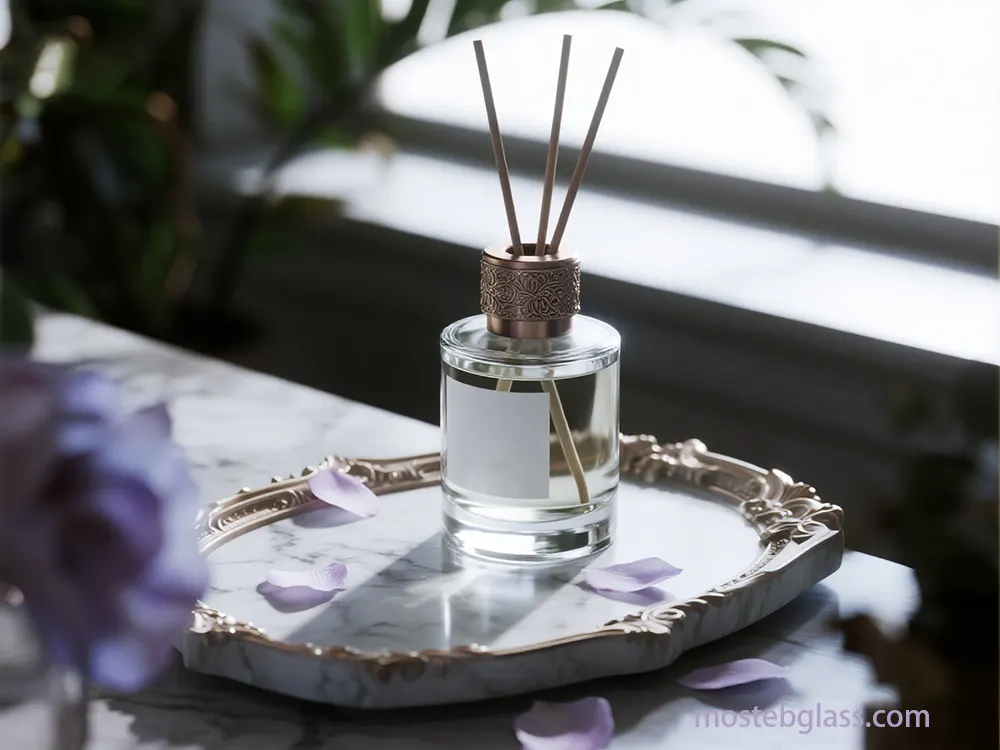
2.5. Social Equity Aspects within the Existing Supply Chain
Ethical sourcing and fair labor are increasingly non-negotiable for eco-minded consumers.
- More than 80% of shoppers consider ethical standards important. A third of shoppers will pay more for an ethical product, especially Gen Z. Ethical Sourcing Defined:
- Ethical sourcing is sourcing that considers human rights, environmental protection, community benefit, conflict-free, and fair labor. Fair Labor Practices:
- Fair labor practices should include the absence of forced/child labor, absence of discrimination, the ability to work in safe conditions, and the ability to earn a fair wage. Transparent supply chains, and lack of regulation, are obstacles. Supply Chain Transparency Issues:
- Such complex and opaque global supply chain prevents product tracing and monitoring. Best Practices:
- It is critical to publicly disclose supply chain information, conduct risk assessments, provide codes of conduct to suppliers, and monitor/ audit suppliers by credible organizations. and build long-term relationships with suppliers based on cooperation. Third Party Certifications:
- Social accountability certification (SA8000), Fair Trade, and product safety certifications (CPSIA, CE Marking, EN71, REACH, Lead-free) are all critical certifications. Industry Initiatives:
- Organizations like the Fair Labor Association (FLA) are working on protections for workers’ rights. The Responsible Jewellery Council (RJC) has developed a model to bring transparency into the industry. Retailers conduct audits of their supply chains, partner with ethical producers, and communicate their ethical practices to consumers through marketing, packaging, and education. Blockchain and certificates of origin can also assist in building trust.
- Regional Nuance: Germany is recognized for its traditional glass-making.
- Worker Empowerment: It is also very important to empower workers, not only through audits, but also through giving them reinforcement (participation and grievance mechanisms).
Technological Solutions:
PLM systems and supplier portals improve transparency by tracking sourcing and materials.
- Design for Circularity: Ethical sourcing increases brand loyalty and sales.
- 3. Emerging Technologies and Speculative Technologies The future of sustainable decorative blown glass will be influenced by advances in material science and manufacturing.
- 3.1. Advanced Glass Composition and Coatings The materials science and innovative techniques addressed here will be developing into lower melting temperature and durability of glass with new environmentally-friendly decorative features.
- New Glass Formulations: Penn State’s “LionGlass” completely replaces all carbon-containing batch materials and reduces melting temperatures by 300-400°C (1,450°C for soda-lime glass). This translates into a 30% reduction in energy consumption and nearly 50% lower CO2 emissions. It also boasts 10x improved crack-resistance and enhanced optical and chemical properties available for tuning. The industry also desires lead-free low-melting alternatives (softening before 600°C), with phosphate and bismuth oxide-based glasses as some contenders.
- Non-Toxic and Environmentally Safe Pigments: High-temperature non-toxic pearlescent pigments are a new batch of non-toxic pigments, while Nature Coatings has released 100% bio-based, carbon-negative BioBlack paint made from wood waste. Academic funding is supporting research into natural plant champions. Other options include water-based or low-VOC pigment systems. Plant oils, combined with mineral pigments, produce durable zero-VOC options with bio-based or low-impact claims in paint formulations.
- Bio-Based Protective Layers and Coatings: BioPowder.com products called “Olea Colors” replace traditional decorative flakes with refined olive stone. General bio-based coatings from renewable resources offer sustainability without sacrificing performance, quality, or durability. The global bio-based coatings marketplace is expected to expand significantly as regulations and consumer demand drive it; however, availability of raw materials and manufacturing costs will be critical challenges for producers.
- 3.2. Novel Low-Energy Blowing Techniques In addition to the material breakthroughs, there are various new manufacturing elements that indicate the possibility for glass formation at a lesser degree of energy-efficiency.
- Jar and packaging add a smooth opening, well -organized material, or an offering of special ribbons offer. A memorable unpassion encourages the purchase of repeating repeat and positive words. Unlike glass “cold work” which is a post-forming decorative step, Corning’s ColdForm™ Technology could allow ultra-thin Gorilla Glass to be formed and shaped at room temperature instead of needing energy-intensive hot molding methods. Such a change would decrease a considerable amount of energy, complexity, and cost by as much as 40% – a similar method may also apply to cold shaping decorative glass materials.
- Additive Manufacturing (3D Printing) of Glass: There is a new low-temperature additive manufacturing method which has been explored, such as with MIT’s approach to direct ink writing, which manufactures multimaterial glass at room temperature, and cures glass at a relatively low temperature of 250°C – which is a considerable reduction from the typical high sintering temperatures of >1,000°C for glass. While AM processes also make it easier to minimize material waste, traditional glass 3D printing is still energy-intensive. Glass AM also face challenges with achieving smooth surface finishes or opacity. A recent breakthrough reported in August 2024 also involved work towards a new heated method for glass DED 3D printing termed “volumetric heating” which involves and tests some initial research of the method at faster deposition rates. Lastly, while AM is a unique way to manufacture glass products, for high-performance applications, there are still strong limitations for high optical clarity and multi-material printing.
- Lastly, establishing kiln-forming as a separate method of heat treatment can also potentially demonstrate new methods of glass manufacture development and research given recent patent filings. The research community is very concerned with energy-efficient alternatives such as 3D-printed polycarbonate. 3.3. Advanced Circular Economy Models for Ornament Lifecycle
- In addition to recycling, advanced models are striving to achieve genuine closed-loop. AI and Robotics Sorting:
- The rise of AI and robotics allows for improved optical sorting for glass by color and type, and also helps to remove contamination. Chemical Recycling:
This new technology breaks glass down into different raw chemical components, which provides a solution for glass that is heavily mixed or contaminated, where it is not suitable for mechanical recycling.
Digital Product Passports and Blockchain:
With blockchain technology, these could provide end-to-end traceability for each ornament, documenting the materials used, where they were produce, energy used, and instructions for its end of life. With this immutable ledger, greenwashing could be eliminated and materials could be retained more efficiently.
Modular Design for Disassembly:
- For a speculative ornament design, one could utilize modular components that could help simplify disassembly – decorative elements could easily be removed and separated from the glass type and the hanging device. Advanced Take-Back and Refurbishment Program:
- Retailers could implement more advanced and modern take-back programs for ornaments and other similar items, creating a financial incentive for returning an old ornament for a new ornament. Once a consumer returns the ornament, it could then be assessed for repair, refurbishment, or material recovery with advanced sorting and processing technologies. This would transition the practice from simple upcycling to industrial-scale circularity. Bio-Integrated Disintegration:
- For non-glass components or coatings, research into materials that safely biodegrade or compost could offer a truly circular solution, ensuring no persistent waste. 4. Economic Viability and Premium Market Positioning
Adopting sustainable practices in blown glass ornaments involves economic considerations but does offer some opportunities in premium markets.
4.1. Cost Considerations of Sustainability in Glass Ornament Production
Recycled Glass (Cullet): Using cullet saves about 2-3% on energy consumption for every 10% of cullet used, mainly because it melts at lower temperatures. This also reduces stress on the furnace, prolongs its lifespan, and reduces the cost for raw materials and transportation. Although the glass industry has abundant recycling infrastructure, an investment in recycling infrastructure does require some upfront capital investment with ongoing operational costs that will decrease over time.
Energy Efficient Production: Transitioning to an environmentally-friendly fuel or electric furnaces may have a higher upfront cost but will ultimately lead to sustainable operational savings in the long-run. Typically, energy-efficient equipment lasts longer too, plus tax incentives can alleviate some upfront costs.
Eco-Friendly Packaging:
While initial material costs can be higher, eco-friendly packaging often leads to long-term savings from reduced waste management fees and lower shipping costs.It also enhances brand image and customer loyalty. However, glass production and recycling can be energy-intensive.
Blown Glass Production Cost Drivers:
- This category captures the studio’s operating expenses which range from $12,800 to $42,500 per month. However, the studio elements needing significant capital are rent, owner/labor salaries, utility bills, raw materials, insurance and the initial studio setup which conservatively exceeds $500,000. Saving Alternatives:
- In addition to direct energy and material conservation, a stronger brand reputation and increased customer loyalty because of sustainability efforts, could translate to more sales and reduced marketing expenses. Rebates and incentive programs from government agencies for green technology are also worthwhile alternatives. 4.2. Premium Market Positioning and Consumer Willingness to Pay
- Sustainability is a strong differentiator that allows for premium pricing for blown glass ornaments. Premium Justification:
- Premium pricing can be justified based on quality, luxury, distinctiveness, limited runs, and custom craftsmanship that highlight the artistry of the product, along with the perceived value of a handmade item. Embracing Sustainability:
- Sustainability is an evolving trend on the luxury spectrum, engaging consumers who are routinely willing to pay higher prices for sustainable and ethically-produced goods. Pricing for perceived value to consumers reflects the additional value assigned to sustainable attributes.
- Transparency and Storytelling: Transparency into sustainable initiatives, supply chains, and positive environmental and/or social impacts builds a trust with consumers that provides justification for a premium.
Consumer Willingness to Pay (WTP):
A large portion of consumers is willing to pay more for sustainable
Christmas-themed decorations:
- 41% for sustainable products in that category and 40% for environmentally-conscious products during the holidays. Other studies show 67-68% of consumer WTP for ethical/eco-friendly brands, and the average premium many consumers paid was between about 9.7% and 12%. Although, research has shown that WTP drops significantly for not exceeding 20-25% premium products.Factors Influencing WTP:
- WTP can be influenced by where the materials originated, production ethics, brand transparency, perceived quality and knowledge regarding the environment.Demographic Differences:
- Young generations (e.g., Millennials, Gen Z) show somewhat higher WTP for sustainable products than Gen Xers and Baby Boomers. Regional Differences:
- Fast growing markets (e.g., India, Brazil, China) are showing higher concern and WTP, as opposed to developed countries (e.g., U.S., Germany, UK) that show less concern but are still willing to pay a higher price. North America currently has more market share than other areas of the world but Europe pays more attention to local and hand crafted product decoration.Market Expectations and Intention-Action Gap:
- The global market share of Christmas ornaments is expected to evident grow reasonably steadily in the timeline ahead. While WTP was stated among consumers there is also the added challenge of an “intention/action gap”, particularly reliant on rising costs and consumer general difficulties identifying what were truly sustainable products. 5. Strategic Integration for Eco-Minded Retailers
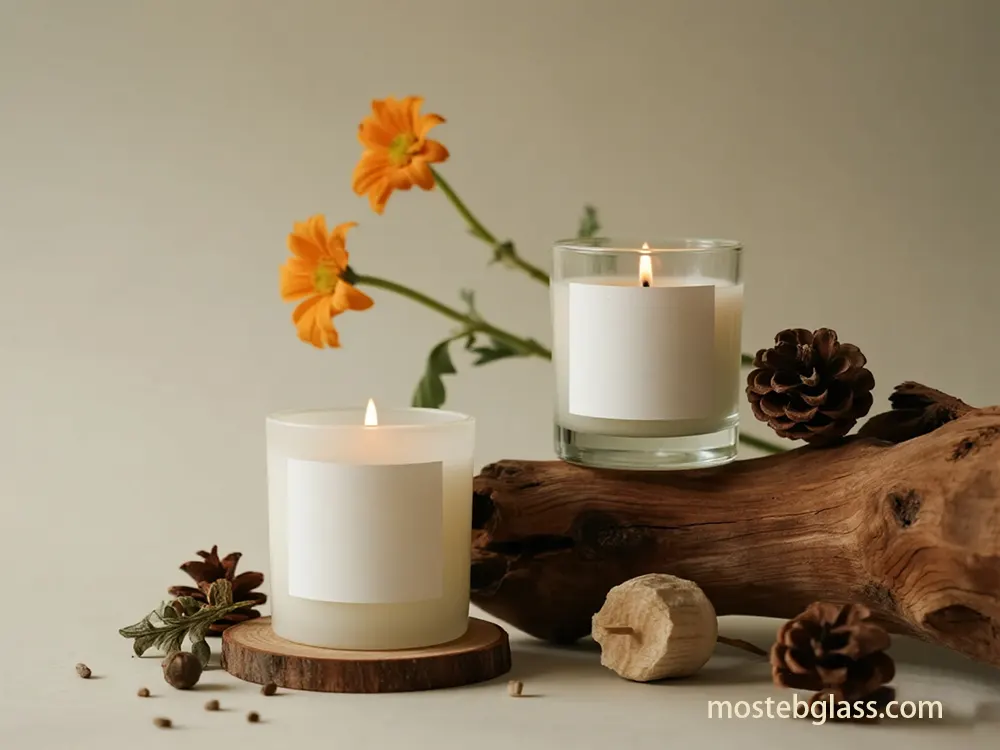
For eco-minded retailers, strategic integration of sustainability across sourcing, marketing, and communication is paramount to capture the growing market for sustainable blown glass ornaments.
5.1. Tailored Guidance for Retailer Segments
- Independent Boutiques: Work directly with artists to tell compelling stories about craftsmanship, local sourcing, and equitable labor. Highlight distinctive sustainable ornaments, such as limited editions or personalization, to instill the sense of human connection and authenticity. Have a strong online presence and utilize transparency in sourcing.
- Large Department Stores: Position sustainable blown glass ornaments in new, dedicated “eco-friendly” sections. Collaborate with brands that are Certified Sustainable to drive broad awareness of benefits through in-store digital merchandising. Provide a range of prices to appeal to a more general shopper.
- Using cullet at once reduces the want for extracting virgin raw substances. Every 1 kg of cullet replaces about 1.2 kg of virgin substances, retaining natural sources. Retailers are already in a good place to offer sustainable Christmas decorations, be explicitly clear in marketing “zero waste,” “handmade,” “recycled materials,” and “fair trade.” Quality images with descriptions and honest reporting about business impacts can ease conversion to purchase for these digital shoppers. Carbon offset shipping and access to a certification can build digital trust with eco-conscious shoppers.
- While other retailers must be rooted in sustainability per their competitive strategies, in the luxury space it is sufficient to position the sustainable blown glass ornament as special, artistic, and rare. Use a narrative about the beautiful materials chosen for color and texture, combined with the artist’s low energy technique for blowing glass and the ethical provenance of the piece. Consider using experiential retail to showcase pieces’ sustainable journey. 5.2. Effective Sourcing and Supply Chain Transparency
- Challenges with Sustainable Sourcing: The glass sector is challenged by high levels of energy consumption, dependence on fossil fuels, and limited recycling infrastructure. The supply chains are complex and fragmented, resulting in data inconsistencies and the potential for greenwashing. Sustainability often comes at a cost and brings up questions of quality when sourcing green materials.
- Provides decentralization and an immutable digital ledger for real-time monitoring of material origin, certifications, and emissions data. Companies like Circularise and Provenance use these types of platforms. Complete Due Diligence:
- Requires continual and structured vetting of suppliers, including risk assessments, codes of conduct, and ethical audits. Unit-Level Traceability:
- Providing real-time data on the movement and origin of the product, unit-level traceability includes QR codes, NFC, and RFID tags. Shorter Supply Chains:
- Shorter supply chains increase traceability while reducing the environmental impact of the supply chain. 5.3. Marketing and Communicating Sustainability
- Utilizing Certifications: Use third-party certifications (FSC, OEKO-TEX®, Cradle to Cradle, B Corp, Fair Trade, GOTS, SFC, Climate Neutral) to help consumers access eco-friendly brands.
Compelling Storytelling:
Communicate stories about craftsmanship, heritage skills, fair labor, and product materials throughout the product lifecycle (e.g. recycled glass, energy-efficient production, ethical working conditions). Embrace brand activism, blend art with heritage and sustainability, and educate consumers about the benefits for the planet.
Strong Messaging for In Store and Online:
- Offer transparent product transparency around growth, manufacturing and labor. Promote eco-friendly packaging and carbon-neutral delivery. Design energy-efficient stores and be honest about what they are doing, even if it highlights challenges, to build trust. Customer Engagement Experiences:
- Build loyalty programs, partner with NGOs for collaborations, use user-generated content, leverage interactive digital tools (e.g. augmented reality- AR) to educate customers before they purchase, and demonstrate products virtually. Best Practices for Authenticity and Transparency:
- Provide verifiable and accurate information with data to support it. Take or acknowledge the trade-offs. Combine multiple ESG claims to prove authenticity but avoid being “green-hushed”. Role of Digital Platforms:
- Crushed, polished glass can be used for intricate layered sand art. 5.4. Geographic Market Demands and Supply Chain Complexities
A major market, inspired by strong holiday traditions and high discretionary expenses, is 16.0% of the global market share with the US. Market for collectable and individual jewelry.
- European Union:Artisans and locally emphasizes citrus decorations. Germany (5.99% global shares) and UK (4.08%) are leaders with strong Christmas market traditions. Scandinavian countries prefer minimal design with natural materials. The Green Deal of the European Union promotes environmentally friendly design.
- Overall, regional mobility highlights a global change towards stability with different motion and perspectives. Glass flower vase manufacturers have strategic opportunities for stability efforts for regional contexts for regional references, take advantage of local incentives, face challenges, and consumer and capitalize on developing preferences.Global Christmas Decore Market is estimated to cross USD 18 billion by 2029, inspired by the increasing demand for permanent options. Pacific lead in development and production as a primary manufacturing center.
- 6. Conclusion and Future OutlookThe stability in the blowing glass Christmas ornaments is mandatory undisputed, which is powered by eco-mounded consumers designed to pay a premium for moral, responsible products. Established trends such as recycled glass, energy-efficient production and durable packaging are becoming basic expectations. Mosteb and other retailers should continuously adopt these practices.
- Emerging innovations– Novel glass compositions (LionGlass), low temperature additive manufacturing, and bio-based coatings- transformational ability to reduce environmental impact and increase durability/design. Advanced circular economy models, supported by digital traceability, such as blockchain, promise a future where ornaments are completely integrated into a regenerative material loop.
- Critical Challenges:Cost vs. Scales:
Skelable, balanced the high upfront cost of sustainable technologies with economically viable production, especially for small artisan studios.
- Supply Chain Opacity: Overcoming complexity and fragmentation to ensure real transparency and prevent greenwashing.
- Consumer education: Bridge the “intentions-action gap” by clearly communicating the value and impact of durable options, helping consumers really identify environmentally friendly products.
- Infrastructure Development: To improve recycling infrastructure for various glass streams and solve logistic challenges to collect low-value, end-of-life decorative items.
- Opportunities for Mosteb and Eco-Minded Retailers: Premium Market Capture:
- Taking advantage of stability to attract rich and young consumers (Millennials, Jean Z) is ready to pay more for moral products. Brand Discrimination:
- The creation of an authentic brand identity that lies in the claims of verification worthy stability and compelling story. Innovation Adopting:
Investing or partnership with innovators in low -energy glass production, advanced materials and digital traceability.
- 2.2. अनुमानित उत्पादन मात्रा या आर्डर मात्रा Promoting customer loyalty through interactive stability initiative, tech-back-programs and educational campaigns.
- Policy Alignment: Capitalization on government incentives and developing regulatory framework supporting permanent manufacturing and circular economy practices.
- The future for sustainable blown glass Christmas ornaments is bright, marked by continuous innovation and increasing consumer consciousness. Retailers embrace these trends, prioritize transparency, and integrate strategically sustainable practices, contribute to a greenery planet and developed a flexible position in the developed holiday decoration market. Wholesale Diffuser Bottles

Wholesale Glass Vases
Latest Insights
Comment Submit your opinion
get a free quote
- Complete our quote request form or email us at to receive a customized quote from our product specialists.
- Company Phone/Whatsapp
- Select a product glass candle jars
- Reed Diffuser Bottle glass vases
Quantity
- contact our Product Expert Send us a message freely if you have any questions. We’ll get back to you within 30 minutes via email at
- , and we’ll adhere to the privacy policy to protect your information. full name
- email adress Please provide us with the capacity, shape, color, and quantity of the glass containers you require. Alsoplease feel free to share any other details or specific requirements to help us better understand yourproject.
- Tell us your requirements, such as capacity, quantity, customization, etc. Promoting customer loyalty through interactive stability initiative, tech-back-programs and educational campaigns.
- Policy Alignment: Capitalization on government incentives and developing regulatory framework supporting permanent manufacturing and circular economy practices.
The future for sustainable blown glass Christmas ornaments is bright, marked by continuous innovation and increasing consumer consciousness. Retailers embrace these trends, prioritize transparency, and integrate strategically sustainable practices, contribute to a greenery planet and developed a flexible position in the developed holiday decoration market.




